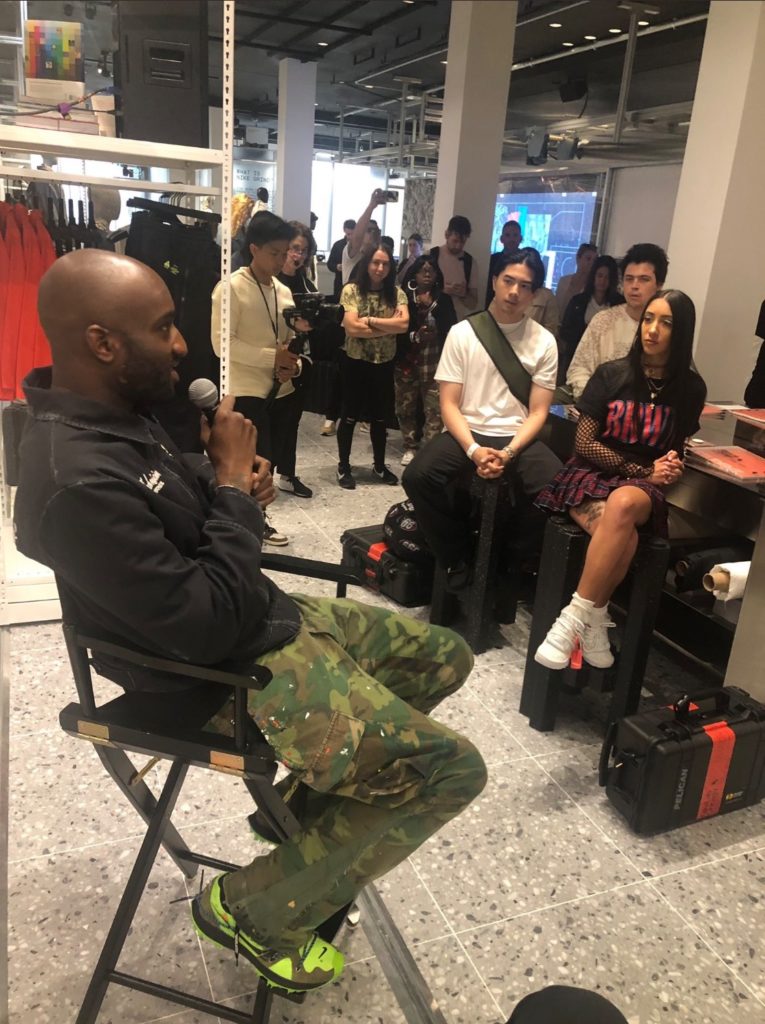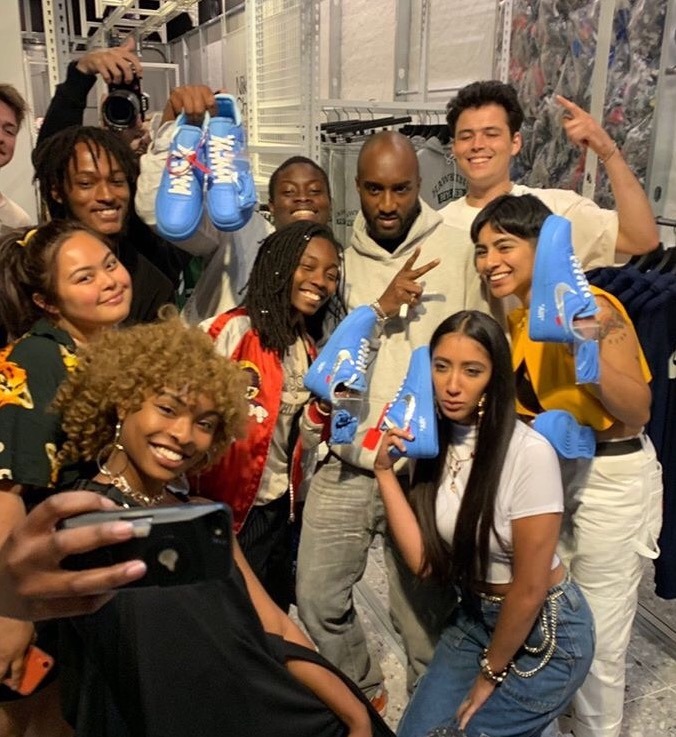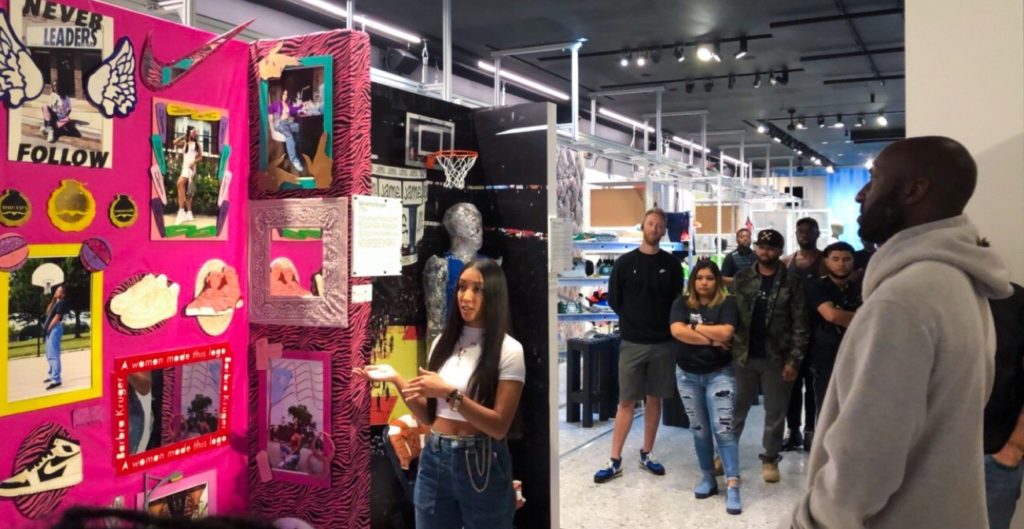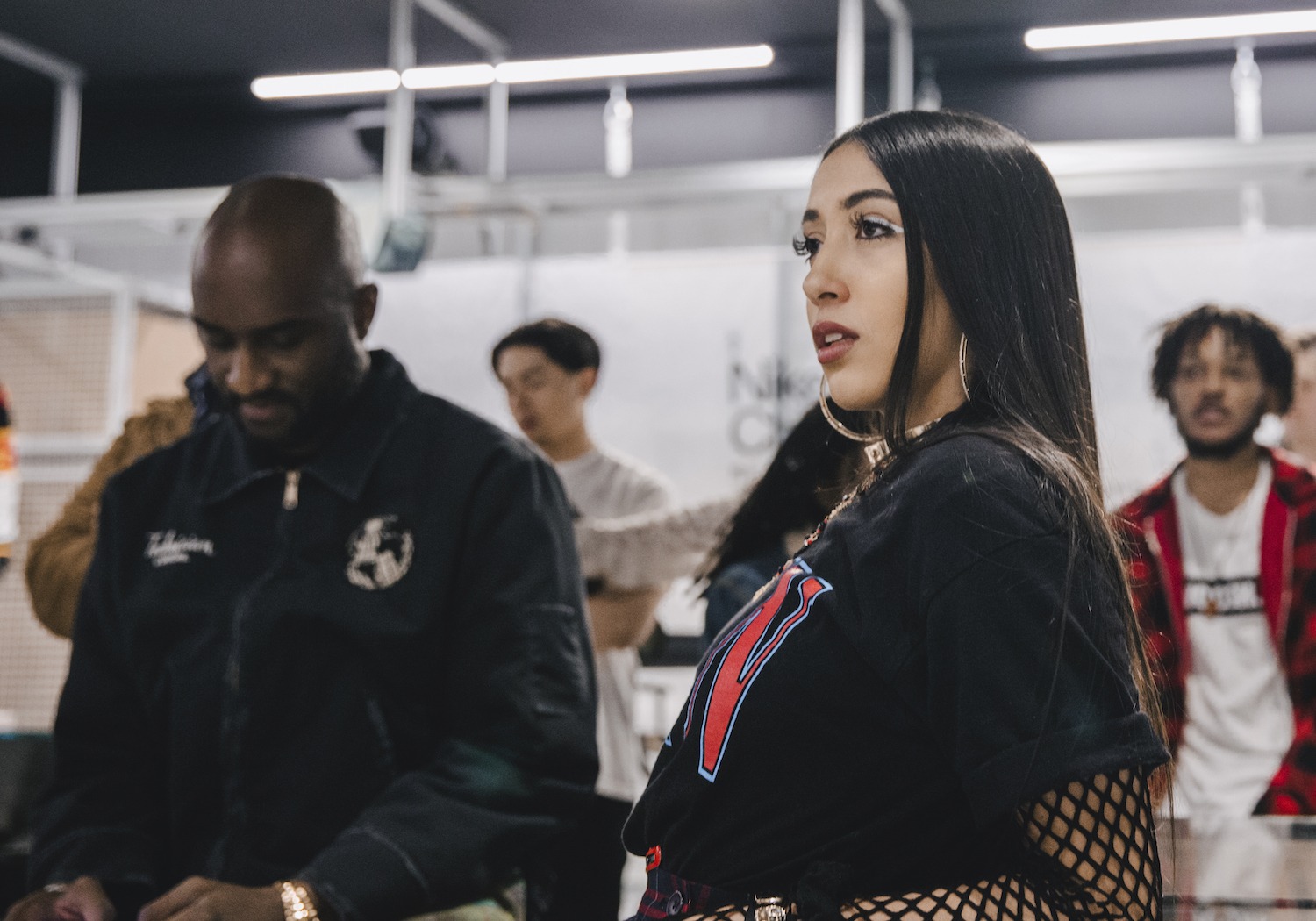Even before I met Virgil Abloh, I had been following his work for a long time. He was such a big name in Chicago after he started Pyrex Vision and RSVP Gallery. I remember being at parties and people whispering, “Virgil might come,” because he was so highly regarded here as a creative and a DJ. He was magnetic and people wanted to be around him, to hear his ideas and absorb his advice, his vibrant energy.

In 2019, I started interning at the Museum of Contemporary Art Chicago, and the staff was preparing for the huge “Figures of Speech” exposition, all about Virgil’s creations. I was already such a big admirer of his work because it was bold and versatile and challenged the normal conventions of design.
I remember one meeting at the museum in which a superfan event was mentioned. I also remember some people being like, “Oh that’s not for you.” I felt treated like an outsider.
Then, literally two weeks later, I was asked to be a part of Virgil’s NikeLab Chicago Re-Creation Center. You couldn’t apply to be in the program. Virgil had hand-selected 10 young people from among 50 who had been nominated.
It was a surreal moment when I got the news. I’m an installation artist, visual artist, fabricator, graphic designer and illustrator, among other things, and being picked for the program by Virgil Abloh himself validated me.
It was a two-month-long program in what was like an upgraded lab workspace. They held workshops for us, took us to studios, gave us resource materials.
Virgil came in at the beginning of the program, and he talked about the importance of giving Chicago youth access to creative spaces where we could work. He talked about Chicago’s impact on the fashion and design world. He was so affirming in his presence. He listened, he was attentive, and he showed each of us that our ideas are valuable.
At first I was so in awe of him, even intimidated, because of the respect I have for him. But he quickly to put me at ease with his calm demeanor and his gentle speaking voice. He talked about why it was important to have this lab and to have us there. To have me there. He was very intentional about opening a creative space for the community, for the people normally left out — people like me, a young Puerto Rican woman.
I can’t help wondering now if he had already received his cancer diagnosis then. That is something I’ve really been thinking on. He probably knew he was on limited time, and this was how he chose to spend it — with young people — because he thought encouraging us was so important.

At the end of the NikeLab program, we got to present our projects to Virgil. It was an incredible experience to share them with him and get feedback from someone of his status.
My project was about gender equality in streetwear and the impact women of color have had on it. It’s a huge boys’ club, streetwear. And there’s a lot of gatekeeping. So I wanted to highlight innovators in the culture: I featured Chicago women who are prevalent and have unique styles and perspectives.
I remember Virgil telling me my concepts were very clear and that the contributions of women are significant. He said he could see me expanding my project into a larger space. Everything he said was uplifting.
I saw him again in 2020, at the Dr. Martin Luther King Jr. Boys & Girls Club in East Garfield Park during NBA All-Star Weekend. He could have acted like he didn’t remember me. But he greeted me and gave me a hug. He was so kind. Then when a group of us were taking a photo off to the side, Virgil came over and jumped into the photo.
Grieving is strange. Virgil had this omnipresence for so long. He was always working on something, and the amount of creations he put out over the years is incredible. He was in Paris. He was in New York. He was in Chicago. He was everywhere doing everything. And now … he’s not. It feels unreal.
I want to be careful not to overstate my relationship with him. I want to be aware of the space I take up. There are other people he mentored who were much closer to him, who got a chance to collaborate with him. But I don’t want to minimize my experience either, because it is mine and it is meaningful to me. You don’t have to be super-close to someone or be a celebrity friend to have them directly influence your life.

The NikeLab program was a huge jumping off point for my career. I felt like I got his co-sign and it has helped open doors for me even now.
But Virgil had a huge impact on me in other ways, too — his whole career, his existence as a Black man in these majority white spaces. Everything he did and stood for was to push boundaries and to show us that we belong. For so long streetwear was looked down upon as a style. He changed that and brought our culture to high fashion. Whenever he was winning, it felt like our whole city was winning. It was empowering and motivating.
He’s my example for how I want to live and for what I want to do. I want to go so much harder. I want to do so much more. I want to be able to move in as many spaces as he did. I want to do for the next generation what he did for me — give them opportunities, resources.
And I’m taking his advice. I’m continuing to tell the stories of women — in my design work, on my podcast — because it meant a lot to me that he could see there was a void I’m trying to fill.
A few days after his passing, I had my nails painted neon green, similar to his signature bright colors. He used quotations a lot in his work. So my nails say, “Forever,” because Virgil is forever. His legacy, his impact, his influence. Forever.



